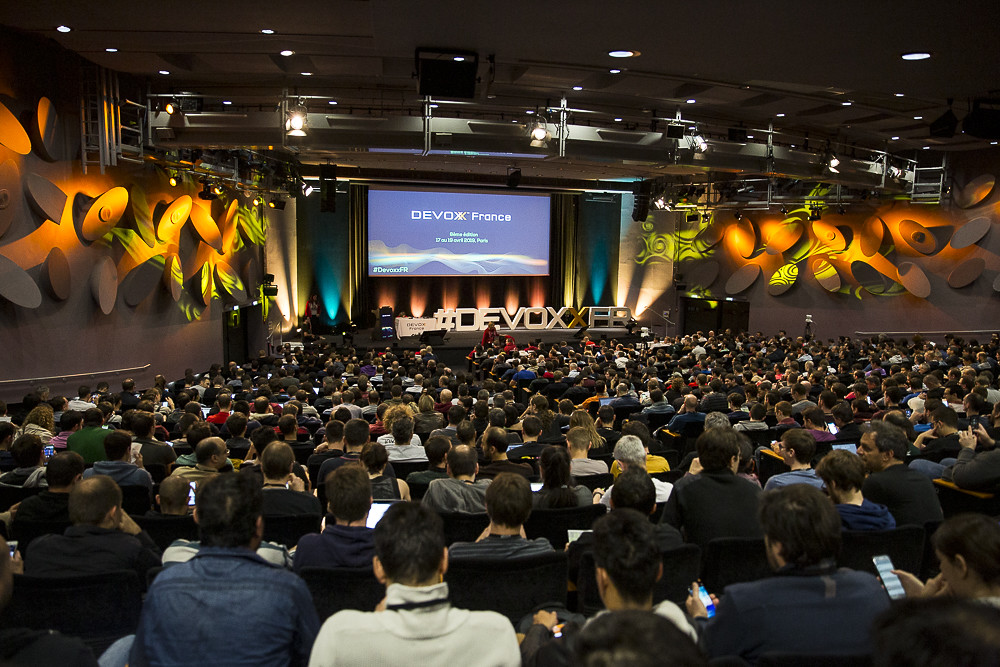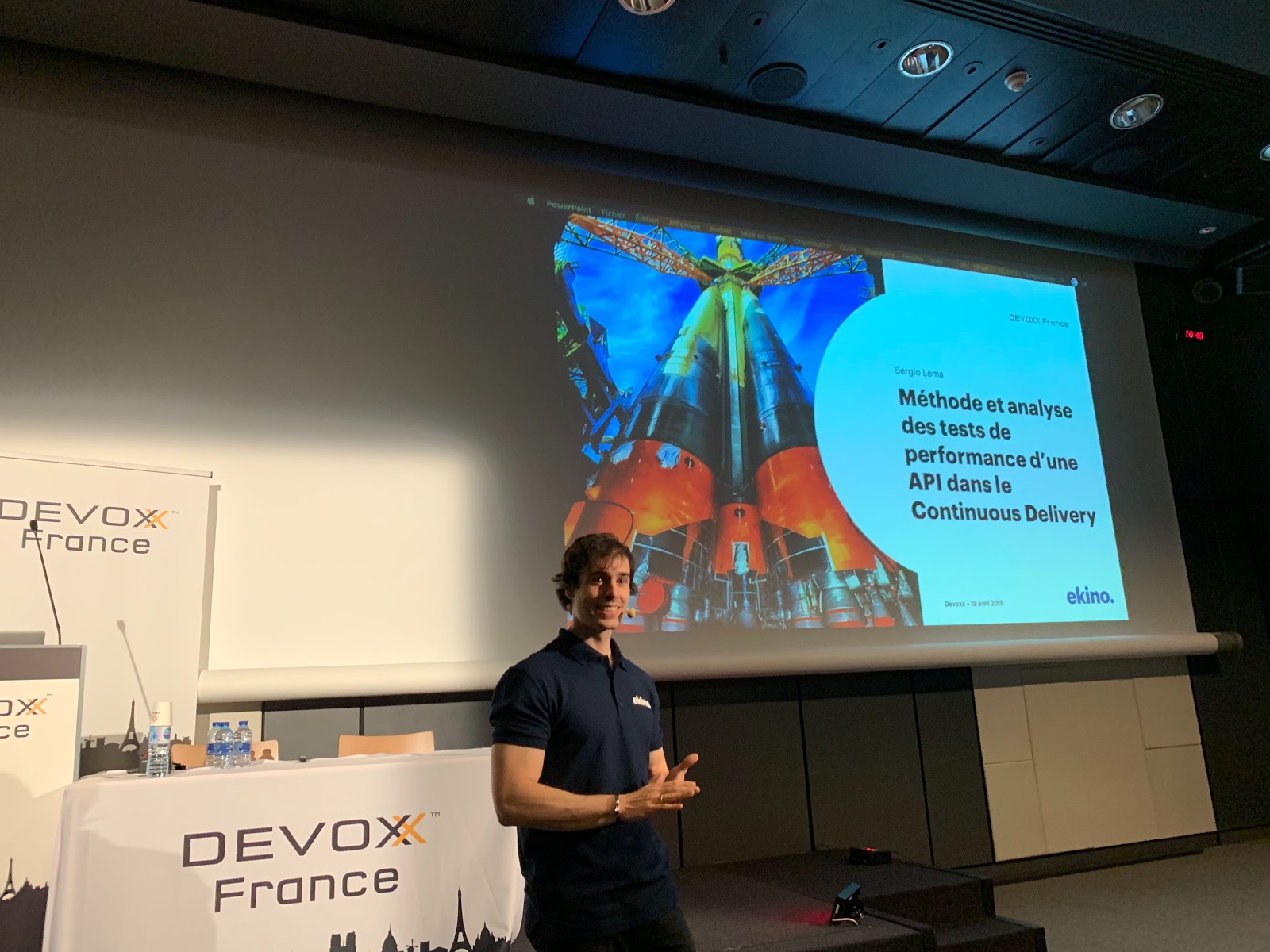How to become a speaker in 2 weeks

I’ve already presented a project I was working on to some colleagues of mine. But I knew them, it was in the office and there were about 10 people. That was basically all the experience I had about presentations in front of people; at this step, going out of my comfort zone was speaking in front of 10 people. Then, the opportunity came up. I got the chance to speak up in the most important event for developers in the country, Devoxx France. An event which gathers 10 000 people. That was the moment the stress began to infiltrate my whole body. “Now it’s for real!” I said to myself. I must present my conference not only in front of my colleagues but also in front of my fellow developers. I estimated around 50 people would show up, at most ! Oh boy, I was wrong ! The following story is about my path to become a speaker. There will be stress, fear and a little bit of sweat, but mostly passion. If you ever consider one day to speak at a conference, don’t worry, this story ends well ! Here are some tips.

1. Get some help
From what I heard before, the only advice was to have little text in each slide. That was all I knew from professional presentations. Not so much… So, I first prepared 50 slides and convinced some colleagues to attend the first session. It lasted less than 30min, but some of them almost fell asleep at the fifth. Few days after that first session, I had a call from human resources and my CTO…They invited me to take training courses. That poor was my level. But it was wrong for me to think like that. The most common mistake is to believe that you can do this all by yourself. It was a chance they offered me. The chance to be better and practice until I become a real speaker !
And here started the formation. I had two different kinds. The first one was oriented to the form and content, and the second was about how to speak in public. First, let’s talk about the form and content of the presentation.
Ok, having little text in your slides is fine, but having 2 or 3 words per slide is even better. Don’t think about sharing your knowledge from the slides, you must share the knowledge with the public, and the slides will just help you to introduce the topic with a word or a picture. If a digital document will be shared after the event, this must be another document with detailed information, but not the slides you present. Another problem I had was the structure of the presentation. The content of my presentation didn’t have a good structure, neither a good introduction nor a conclusion. The introduction must be clear, showing the problem and introducing the solution; then discuss about the solution; and at the end, the conclusion must be strong, must show the benefits. The most important thing is the conclusion. The last words will be what the audience will remember 30 minutes (and days I hope!) after your presentation. Make sure to be impacting and remembered. After practicing, I’ve made another session in front of other colleagues. This time, it lasted 15 minutes before someone fell asleep (I’m progressing!). The problem was that I showed too much stress by moving too much my hands or moving constantly from one leg to the other. That’s why I practiced for 3 days with a dedicated mentor who taught me How to speak in front of a public, and how to say something and make the audience listen to it (without the legs problem).
The position of the speaker must be stable, with both legs fixed on the floor (can take some steps, but fix again on the floor); the eyes must be fixed to every single person for two or three seconds, as speaking to a friend; and the voice must be loud, and ending sentences even higher. In the first 30 minutes, my mentor started by listing the parasites words (aaaand, soooo, theeeeen), those words which say nothing but are on each sentence. This is noise for the brain, the audience must filter it and they will be tired to listen to the speaker after that. Eliminate these parasites is essential. Someone asked: “but which word should I use instead?”. None. Leave a silence. With the silence, the audience will rest and think about the last sentence you said. That’s how to impact the best…the silence.
2. Put your mind into it
Let’s now talk about the mindset. Now, I have to handle the stress. And that can be done answering just those 3 questions:
- Who am I as a speaker? I’m just a passionate developer who wants to share his knowledge and experience. I have done it a lot of times with friends and colleagues.
- Where am I speaking? In a technical conference, somewhere I’ve been other times.
- Who is my audience? Developers like myself. How many? I don’t care!
As I said, I was very stressed (I’m a very shy person) about speaking in front of maybe 50 people. So, that’s what I practiced with the second mentor. I learned to answer those 3 questions every time I started practicing presentation, and to think clearly before speaking to avoid parasite words and have silences instead. After some more training, I had another session in front of my colleagues again (hard work for them too!) and the CEO of the Group. This time, with both of my trainings completed, I succeeded to maintain the audience awaken! But the feeling was not from a perfect presentation. Malo (the CEO) gave me some more valuable advice about the storytelling.
3. Tell a story
This is about how to attract the audience and immerse them into your presentation. Mine was mainly listing the content and listing the solutions I found. Instead of this, I had to start each slide, each topic with a problem, with a personal situation that the audience can be reflected and then come with the solution. What does that mean? I have to share my experience: I had a problem and here is how I found the solution. I’m not teaching you how to do it, you’re smart enough to find the solution that best fits your problem. My work here is just showing my experience, how I found my solution. So I did, I thought about telling why I’ve created this project, why I needed the project, and how I did it in only one week. I’ve structured the presentation around the week I’ve created the project. I’ve started with an introduction situating the story the week before the story, describing the chaos I’ve been in a project which too much complexity, and where a fix opens a new bug. At this introduction, I’ve described the problems of the project, and what should look like the utopic solution and what I need from this solution. From that, the rest of the chapters each show a day of the week with a part of the solution explained and the next step needed, building all together the complete solution which is presented at the end of the presentation.
So, I’ve gone from a listing of points describing a solution, to a story of a solution: from the problem, thinking about a solution and how the solution was built in small steps.
4. Listen to yourself
After each session I’ve made in front of my colleagues, I got some advice: some going in one direction some going in another direction, sometimes even contradictory. That made me think, who should I listen to? In the trainings I had, I learned that there are many types of people, with different mindsets, which expect different things from a conference, which are impacted in different ways; and you can’t satisfy everyone. So the best content to present, is the content I wrote, I feel more confident with. I’ve removed some parts I was not confident with, some details which bored most of the audience and added more personal context, because if I’m not confident with the content the people will notice it and that will send a bad message. This was the biggest change I’ve made in the slides, I’ve almost rewritten everything but the worst, was that all this was done the previous day to the presentation, which means no more time for training sessions.
5. Live your moment
The day has come: 3 days of conferences, more than 200 presentations and around 10 000 developers assisting. Hopefully, my turn was the last day early in the morning. This means that I can go to the other presentations and see the level of the others, which calmed me as I saw that there were a lot of speakers in the same situation as I was. And the moment arrived. It was not 50 people as I supposed, but 400…!
What was the result? I didn’t last 30 minutes as I did in the training sessions, but 43 minutes (the maximum allowed was 45 minutes), which means that I was very comfortable. It was not perfect, but it was good, and the best is that I liked it. What I learned? Sharing your work, your passion it’s a full time and rewarding work. This was a new dimension of knowledge which I discovered: how to speak to the people, how people listen to you. That was my very first presentation at this scale, but I hope some more will come soon.

As you noticed, this is not a technical article, but it’s a real experience that any developer who wants to improve himself in another domain (sharing the knowledge) can live. In my case, I started with some bases but far away, and it was with the help of many people that I could learn how important is the way to communicate a message. Almost 20% of the communication is about the message, the rest is about the way you share it. That’s why I focused a lot on my communication skills when sharing this personal project. Feel free to see the result by yourself : https://www.youtube.com/watch?v=epVdrCr_Hdg&list=LLX4Syq9w7RAI-nXIsbtVJqg&index=6

